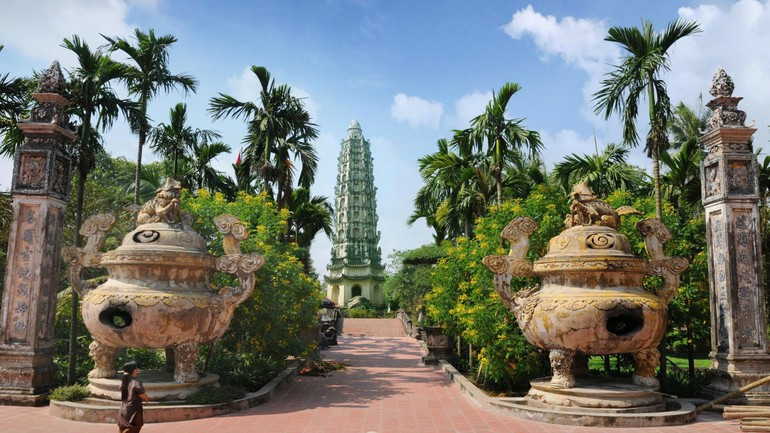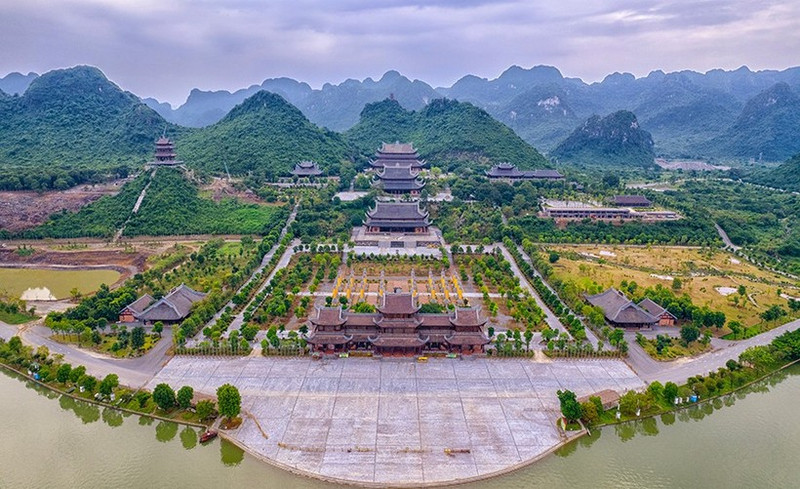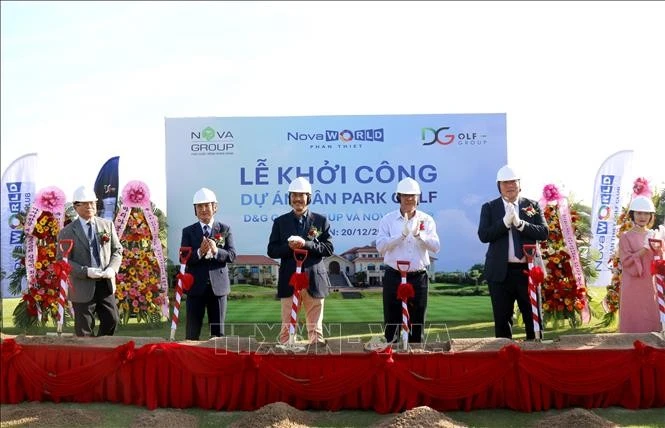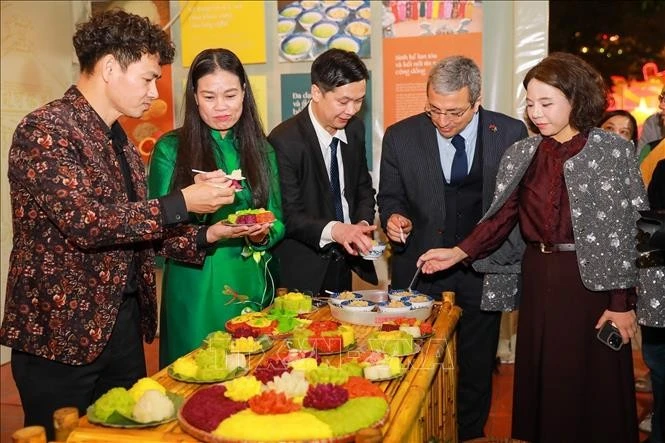The Tam Chuc Scenic Complex, located in Tam Chuc Ward, Ninh Binh Province, features a tropical humid limestone karst landscape of outstanding geological significance, similar to that of Trang An.
Formed over more than five million years ago, the complex boasts pristine and splendid landscapes with remarkable aesthetic values, a blend of towering karst mountains surrounded by cliffs, covered by forest canopy, depressions, caves, and underground streams.
The complex also represents ecological and biological processes and is home to a population of white-cheeked crested gibbons, one of the rarest primates in the world with over 400 individuals.
Archaeological research indicates Tam Chuc was inhabited by ancient Vietnamese people influenced by the Hoa Binh culture from 20,000 to 30,000 years ago. This area also preserves traces of the formation and development of Buddhism, especially associated with Zen Master Nguyen Minh Khong during the Ly dynasty and the Buddhist Emperor Tran Nhan Tong.

Meanwhile, Co Le Pagoda, also known as Than Quang Temple, is located in Co Le Commune, Ninh Binh Province. It was founded during the Ly dynasty (12th century), linked to the merits of Zen Master Nguyen Minh Khong. However, the current structure was built by Venerable Pham Quang Tuyen in the early 20th century.
The pagoda stands out with its unique architectural artistry, harmoniously combining traditional Eastern architecture with Western Gothic style, reflecting a fusion between Buddhism and Christianity.
The Co Le Pagoda festival is held annually from September 13 to 16 on the lunar calendar to commemorate the birthday of Zen Master Nguyen Minh Khong.
The State’s recognition of these two relics not only confirms their outstanding cultural, historical, and architectural values but also opens up many opportunities for preserving and promoting heritage values and developing sustainable tourism in Ninh Binh Province.
With these two newly-listed relics, Ninh Binh Province now has a total of 10 special national relics.
















